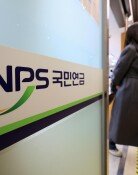Yongin Semiconductor Cluster’s delay reflects the realities of Korea
Yongin Semiconductor Cluster’s delay reflects the realities of Korea
Posted February. 27, 2025 07:51,
Updated February. 27, 2025 07:51
SK hynix’s Yongin semiconductor cluster, a 120-trillion-won project announced in 2019, finally commenced work six years later. Meanwhile, competitors in Japan, the United States, and Taiwan, whose projects even came after Yongin’s announcement, have already completed their fabs and are mass-producing chips. On Tuesday when Governor Rhee Chang-yong of the Bank of Korea projected economic growth rates to remain in the one percent range for both this year and the following year, he said, “This only shows where we are standing.” The sluggish progress of the Yongin project clearly indicates how the South Korean economy has ended up in the trap of low growth.
The Yongin semiconductor cluster project had to overcome immediate opposition from local governments and civic groups following its February 2019 announcement, with concerns over wastewater discharge causing delays in the project. It took one year to complete an environmental impact assessment with the pledges made to verify the safety of the construction and build local industrial complexes. Added to this, it took another year to secure water use approval from a local government located along the industrial water route.
The project faced substantial delays, including one and a half years of resolving resident land compensation disputes and further obstacles after the Ministry of Trade, Industry & Energy scrutinized carbon emissions from planned power plants within the cluster. To address the growing global demand for high-bandwidth memory (HBM) systems in AI chipsets, SK hynix overhauled the overall business plan, repurposing its Cheongju facilities—originally dedicated to other semiconductor types—to prioritize HBM production.
While South Korea’s semiconductor industry faces persistent delays due to various hurdles, global competitors have achieved great progress in realizing their chip production plans. Taiwanese chipmaker TSMC’s Kumamoto plant in Japan, announced in 2022, completed construction in just two years and recently began mass production. Similarly, TSMC’s Arizona fab, initiated in 2021, entered a mass production phase last month. Such rapid progress was made based on proactive government and local support, including resolving land, power, water, and road challenges, coupled with massive subsidies and tax incentives.
In response to the diagnosis that South Korea's economy has entered a prolonged low-growth phase, BOK Governor Rhee attributed this to the country’s failure to implement restructuring measures and cultivate new growth engines. The first production lines at the Yongin semiconductor cluster are expected to begin operations in May 2027, marking an eight-year gap since the business plan was first announced. This sluggish pace will inevitably hinder the ability to adapt to rapidly evolving global market dynamics. It is not logical to expect South Korea to keep its lead in the global chip market when its key companies need two to three times more time to build their own plants compared to competitors.






![전셋집 보일러 고장 났다면 수리비는 집주인 몫[부동산 빨간펜]](https://dimg.donga.com/c/138/175/90/1/wps/NEWS/IMAGE/2025/12/04/132901947.1.jpg)
